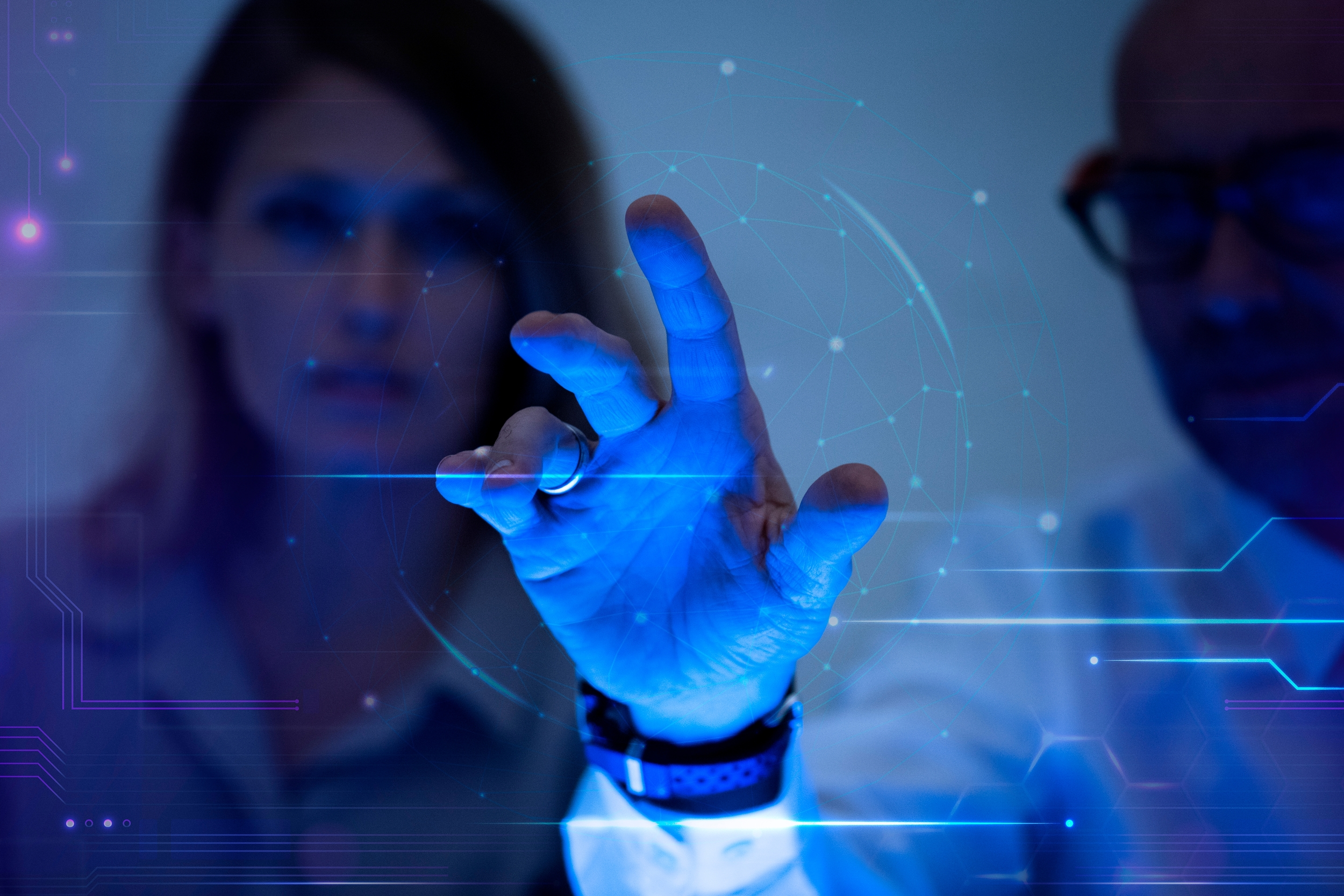Artificial Intelligence (AI) & Machine Learning (ML): Beyond Automation
The Evolution
AI and ML are transcending traditional boundaries, moving beyond simple automation to become integral components of decision-making processes, creative fields, and critical problem-solving arenas.
These technologies are not just tools but collaborators that enhance human capabilities.
Advanced Applications
In the realm of AI and ML, we’re seeing developments like natural language processing (NLP) that enable machines to understand and respond to human language with remarkable accuracy.
In industries like finance, AI algorithms are not just predicting market trends but also identifying fraudulent activities with a precision that far exceeds human capability.
Furthermore, in creative fields, AI is being used to:
- Compose Music, with examples such as Mubert and Loudly
- Generate Art, with examples such as DALL-E, Midjourney & Stable Diffusion
- Write Fiction, with the example of Sudowriter
Transformative Impact
The real magic of AI and ML lies in their potential to unlock new horizons:
- Environmental science: AI is used to model climate change scenarios and develop strategies to mitigate impacts.
- Healthcare: Personalized treatment plans generated by AI are leading to more effective therapies with fewer side effects, heralding a new era in personalized medicine.
As well as plenty of others…
OpenAI
A standout in the field of AI, OpenAI has been making headlines with its advanced AI models, including ChatGPT. These models have showcased the potential of AI in:
- Understanding and generating human-like text
- Revolutionizing how we interact with machines
- Providing new tools for education, customer service, and content creation.
DeepMind
A subsidiary of Alphabet Inc., DeepMind’s breakthrough in protein folding with AlphaFold has monumental implications for biology and medicine, showcasing the power of AI to solve complex scientific challenges.
This innovation opens new avenues for drug discovery and understanding diseases at a molecular level.
AI in Automotive
Companies like Tesla and Waymo are at the forefront of integrating AI into autonomous vehicles
Tesla’s Autopilot and Full Self-Driving (FSD) features are leading examples of how AI is being used to navigate the complexities of real-world driving, enhancing safety and efficiency on the roads.
Sustainable Tech: Forging a Future in Harmony with Nature
The Vision
As the tech industry looks ahead, there’s a concerted effort to harmonize innovation with environmental stewardship.
Sustainable tech is no longer a niche but a necessity, shaping how products are designed, used, and disposed of.
Innovative Solutions
Innovations are emerging across the board — from biodegradable electronics that reduce e-waste to new forms of energy storage that are both more efficient and less harmful to the environment.
Companies are investing in circular economy models, where products are designed to be reused, recycled, or remanufactured, dramatically reducing the ecological footprint of tech products.
Global Influence
Sustainable technology is also making waves in global energy solutions, with advancements in solar, wind, and hydroelectric power leading the charge toward cleaner, renewable energy sources.
Smart grids and smart homes are becoming more common, optimizing energy use and reducing waste, illustrating a global shift towards sustainability that transcends industries.
Sustainable Tech: Driving Environmental Innovation
Beyond Meat
Addressing the significant environmental impact of meat production, Beyond Meat uses innovative technology to create plant-based meat alternatives that are not only sustainable but also delicious, tackling climate change one meal at a time.
Rivian
Rivian is an electric vehicle startup that’s challenging the status quo with its electric trucks and SUVs designed for adventure without the environmental footprint.
Rivian’s commitment to sustainability extends beyond its vehicles, aiming to use 100% renewable energy in its operations.
Ecovative Design
Specializing in mycelium-based products, Ecovative Design is at the cutting edge of sustainable materials, creating everything from packaging to furniture and leather alternatives.
Their work demonstrates the potential of biofabrication in reducing waste and reducing dependency on polluting materials.
Digital Health: A New Paradigm in Healthcare
The Revolution
Digital health is not just changing; it’s revolutionizing the healthcare landscape. It’s making healthcare more accessible, personalized, and predictive, with a focus on wellness and preventive care rather than just treatment.
Beyond wearables and telehealth, we’re seeing the rise of AI-powered diagnostic tools that can detect diseases from retinal scans or predict health issues through pattern recognition in health data.
Virtual reality (VR) therapies are being used for pain management and psychological conditions, offering new avenues for treatment that were previously unimaginable.
Empowering Individuals
Perhaps most significantly, digital health is democratizing healthcare. Mobile health apps provide personalized advice, nutrition plans, and fitness programs, empowering individuals to take charge of their health.
Blockchain technology is being employed to secure patient data, giving individuals control over their health information and how it’s used, ensuring privacy and security in a digital age.
Digital Health: Revolutionizing Patient Care
Teladoc Health
A pioneer in telehealth, Teladoc Health has made medical consultations accessible from anywhere, breaking down barriers to healthcare access. Their services have become increasingly vital, offering a broad range of medical advice through digital platforms.
Fitbit:
Among the first to popularize wearable technology, Fitbit has evolved from fitness tracking to a comprehensive health monitoring tool.
Its devices now offer features like heart rate monitoring, sleep tracking, and even blood oxygen levels, empowering users with data about their health.
23andMe
By making genetic testing accessible to consumers, 23andMe has opened up new possibilities in personalized medicine.
Users can gain insights into their genetic predispositions for certain health conditions, informing their lifestyle choices and healthcare decisions.
As we delve deeper into each of these areas, it becomes clear that 2024 is set to be a landmark year where technology not only advances but does so in a way that is thoughtful, sustainable, and inclusive.
These trends underscore a collective stride towards leveraging technology not just for the sake of innovation but for building a better, more sustainable, and healthier world for all.



